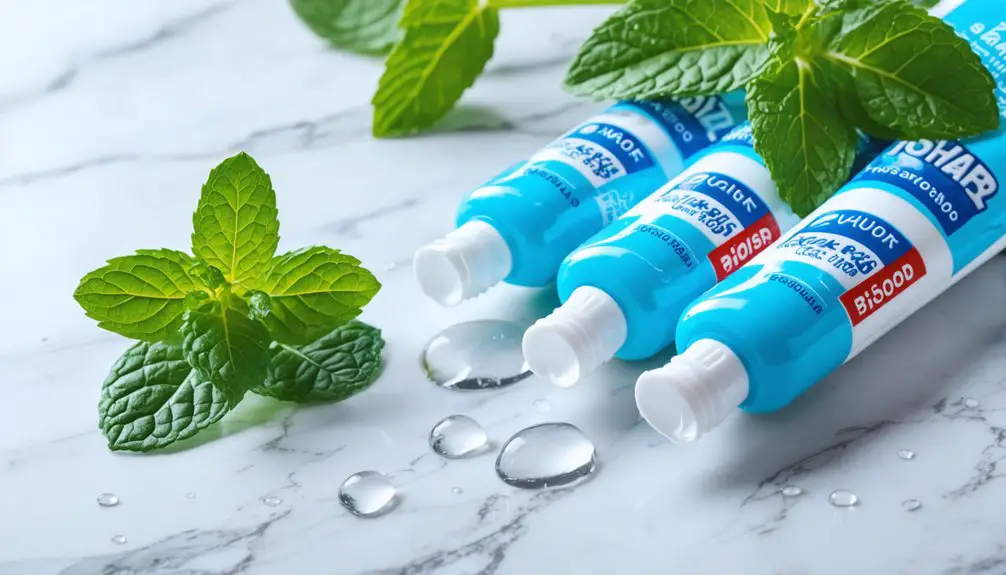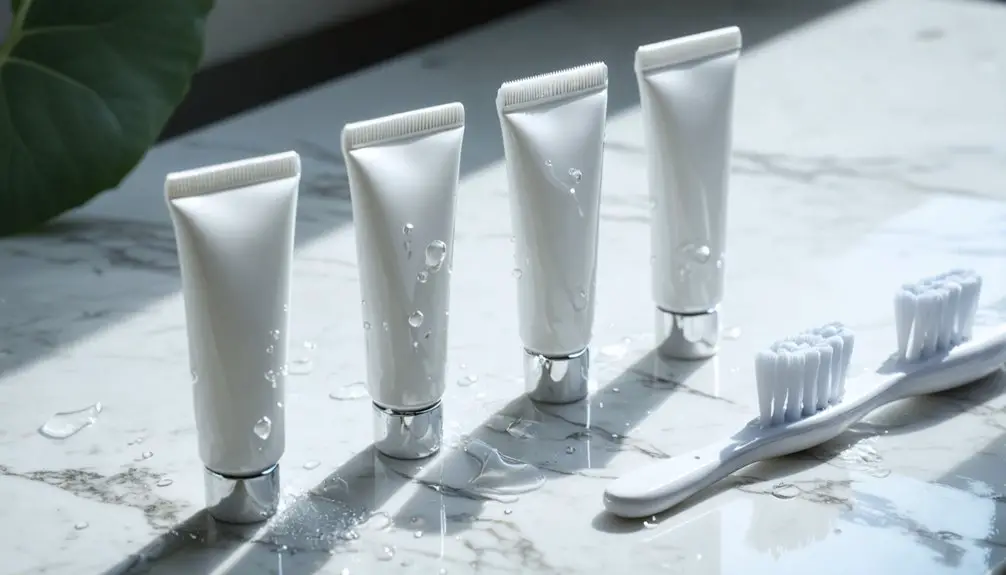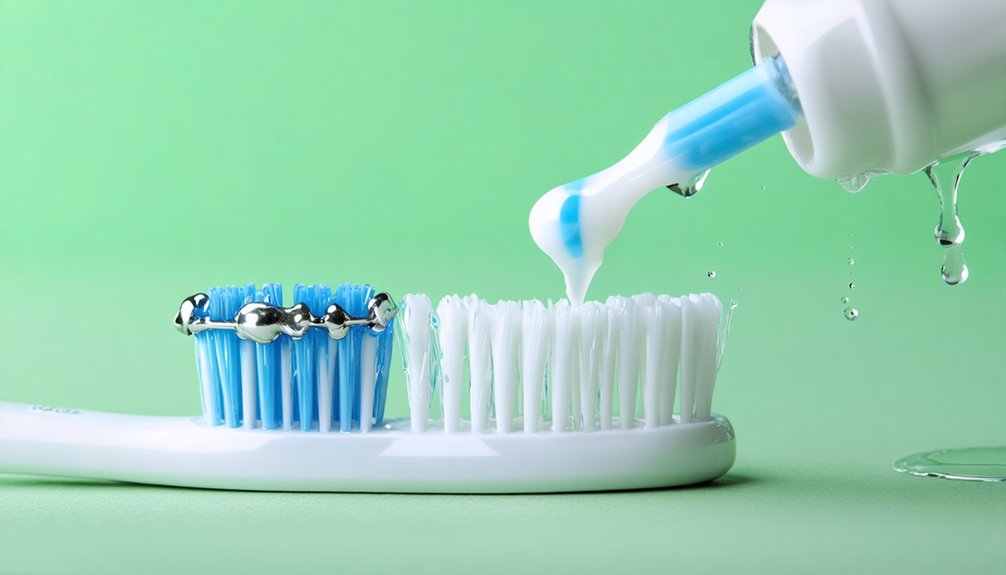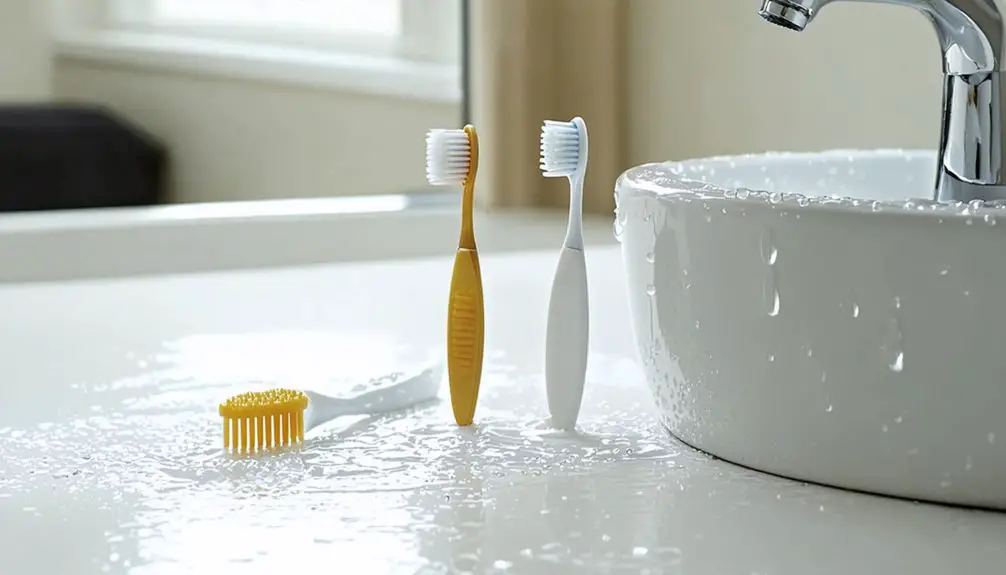You’ll find excellent whitening results with three proven budget-friendly toothpastes: Crest Pro-Health Advanced with stannous fluoride for superior stain removal, Colgate Total Clean Mint for extensive antibacterial protection, and Arm & Hammer Peroxicare featuring baking soda and peroxide for thorough cleaning. Each option carries the ADA Seal of Acceptance and delivers professional-grade results at an affordable price point. Understanding the key ingredients and features can help you make the most informed choice for your smile.
Key Takeaways
- Crest Pro-Health Advanced combines stannous fluoride with whitening agents for effective brightening at an affordable price point.
- Colgate Total Clean Mint delivers proven antibacterial protection and whitening benefits while remaining budget-conscious.
- Arm & Hammer Peroxicare uses baking soda and peroxide to remove stains effectively without breaking the bank.
- Look for larger tube sizes and multi-packs of ADA-approved toothpaste to maximize value and brighten smiles.
- Choose toothpaste with gentle abrasives like hydrated silica for safe stain removal and whiter teeth.
What Makes a Budget-Friendly Toothpaste Worth Buying
While budget-friendly toothpaste options flood the market, several key factors determine their true value and effectiveness for oral health.
You’ll want to prioritize ADA-approved formulas containing fluoride, particularly stannous fluoride, which offers both anti-cavity protection and sensitivity relief.
Look for gentle abrasives like hydrated silica that remove stains without damaging enamel, and avoid harsh ingredients such as charcoal. Opalescence whitening toothpaste is particularly effective due to its low abrasiveness level.
Consider ingredient efficacy when evaluating larger tube sizes and multi-packs, as these can provide better value without compromising quality. The Colgate Total Clean offers exceptional value at just $4 at Walmart while maintaining ADA approval for cavity prevention and plaque reduction.
Many affordable brands now include beneficial ingredients like potassium nitrate for sensitivity and zinc citrate for fresh breath.
While consumer preferences may lean toward natural or specialty formulations, make sure your choice maintains essential protective elements for peak oral health.
Top Affordable Toothpastes That Actually Work
Several well-established toothpaste brands offer effective oral care at budget-friendly prices.
You’ll find proven whitening effectiveness in Crest Pro-Health Advanced, which uses stannous fluoride and ActivClean Crystals for gentle stain removal.
Colgate Total Clean Mint delivers extensive protection through its antibacterial formula while maintaining ingredient safety standards with ADA approval. Most users experience noticeable results after 2-4 weeks of regular use.
If you’re seeking natural alternatives, Tom’s of Maine provides both fluoride and fluoride-free options with proven whitening capabilities.
For those who prefer traditional cleaning power, Arm & Hammer Peroxicare combines baking soda and peroxide technology for thorough stain removal without excessive abrasiveness.
Regular dental cleanings complement these affordable toothpaste options for optimal oral health maintenance.
Each of these options effectively balances cost with performance, offering you reliable oral care solutions that won’t compromise your budget or dental health.
Natural vs. Traditional: Budget Options Compared
Choosing between natural and traditional toothpaste doesn’t have to strain your wallet, as both categories offer budget-conscious options with distinct benefits.
While traditional toothpaste contains synthetic chemicals that provide proven cavity protection, natural ingredients can offer gentler care for sensitive mouths. Many brands now combine features from both natural and conventional formulations to provide comprehensive care at affordable price points. Looking for the ADA Seal of Acceptance helps ensure you’re getting a scientifically tested product, regardless of price point.
- Traditional options typically provide stronger stain removal and whitening effects through targeted formulations, making them cost-effective for visible results.
- Natural toothpastes use plant-based ingredients like coconut oil and baking soda, ideal if you have chemical sensitivities.
- Budget traditional brands often include fluoride for proven cavity protection, which many natural alternatives lack.
- Cost-effective natural options may require more frequent brushing for comparable results, but they’re gentler on gums and better for those with sensitivities to SLS.
Frequently Asked Questions
How Long Does a Typical Budget Toothpaste Tube Last With Regular Use?
Your budget toothpaste tube will last about one month with regular twice-daily usage. You’ll get approximately 60 uses per tube, though tube longevity depends on your toothpaste usage amounts.
Can Budget Toothpastes Effectively Whiten Teeth Like More Expensive Brands?
Like gentle waves polishing beach glass, affordable alternatives can brighten your smile through consistent stain removal, though their whitening effectiveness is more gradual than expensive peroxide-based brands you’ll find.
Are Budget-Friendly Toothpastes Safe for People With Sensitive Gums?
You can safely use budget toothpastes if they contain gentle ingredients like stannous fluoride and avoid harsh abrasives. Check for sensitivity-specific formulas and low RDA ratings to protect your gums.
Do Cheaper Toothpastes Have a Shorter Shelf Life Than Premium Ones?
Lo and behold, shelf life comparison studies show you’ll find no significant difference between budget and premium toothpastes. Both maintain similar ingredient quality and stability during their FDA-regulated two-year shelf life.
How Often Should I Switch Between Different Types of Budget Toothpaste?
You don’t need frequent switching between budget toothpaste varieties. Stick with one fluoride toothpaste for 2-3 months, changing only if you develop specific oral health concerns or experience reduced effectiveness.
References
- https://myprivatedentist.com/best-toothpaste/
- https://www.thequalityedit.com/articles/best-natural-toothpastes
- https://gimmethegoodstuff.org/blogs/guides-and-product-reviews/the-best-non-toxic-toothpaste-guide
- https://www.goodhousekeeping.com/health-products/g46276327/best-toothpastes/
- https://nhdentistrybeverlyhills.com/press/the-5-best-whitening-toothpastes-according-to-a-cosmetic-dentist/
- https://bellevuedentaloasis.com/blog/cheap-vs-expensive-toothpaste/
- https://arkansasfamilydental.com/dentist-recommended-the-best-of-the-best-at-every-budget/
- https://greenpointsmiles.com/blog/navigating-the-aisle-a-comprehensive-comparison-of-popular-toothpastes/
- https://frankfortsmilesdental.com/blog/dental-health/what-is-the-best-toothpaste-to-use/
- https://www.walmart.com/browse/personal-care/toothpaste/best-rated/1005862_1007221_1023020/Y3VzdG9tZXJfcmF0aW5nOjQgLSA1IFN0YXJz



